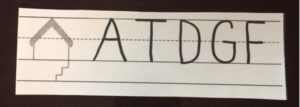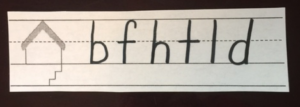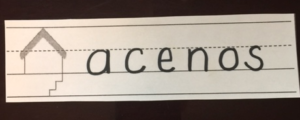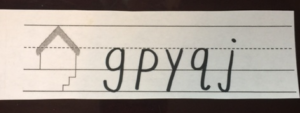Letter Formation: Orton-Gillingham House Paper Activity
Posted by Samantha Brooks on 29th Jul 2018
Letter formation is a foundational skill that plays an important role in early literacy development. When children learn how to form letters correctly, they build the necessary skills for handwriting, reading, and writing skills. It supports cognitive development by reinforcing letter recognition and phonemic awareness, both of which are critical for learning to read. Starting early with structured letter formation activities helps children gain confidence in writing, setting them up for success in the future.
Paper House Multisensory Activity
Using House Paper is excellent for teaching the formation of letters and orientation so that students understand the letters and where they live in the house. Kids are familiar with the concept of a family and they can relate to the House Paper family members. This visual explains spatial orientation for letters in a fun way that kids understand.
Paper House Activity Directions
Start by explaining the concept of the house to students. This house has an upstairs, a downstairs, and a basement. Some letters live on one floor or multiple floors.
*Upstairs
*Downstairs
*Basement
The Adults (all capital letters) live upstairs and downstairs
The Teenagers (b,d,f,h,k,l,t) live upstairs and downstairs, but they are not fully grown like the adults.
The Babies (lowercase letters: a,c,e,m,n,o,r,s,u,w,x,z) live only on the first floor. They stay on the first floor because they cannot go upstairs by themselves.
The Pets (g,j,p,q,y) like to go down to the basement because they have tails. The basement is “unfinished” and “no one else goes down there because there are cobwebs!”
Lastly, handwriting is an important skill that must be brought to automaticity. It frees up a person’s mental reserve for writing fluency, as students do not have to expend energy on letter formation. Equally as important, improved decoding increases reading fluency that frees up mental reserves, so more energy can be used towards comprehension.
Addressing Challenges in Letter Formation
As children begin practicing letter formation, it’s common for them to make mistakes such as forming letters backward (like writing a "b" instead of a "d") or making their letters too big or small. These errors are normal, but addressing them early is important to ensure good handwriting habits.
To avoid mistakes, focus on consistent practice with clear guidelines. Using activities like the Paper House helps students visualize the right letter size and alignment. Another common issue is spacing between letters or words, which can be improved by teaching students to use their finger as a space guide or practicing writing on graph paper to maintain proper spacing.
Enjoy!
Handwriting: Lessons for Print’s™ methods and multimodal techniques support students in developing letter formation automaticity through a multisensory, systematic, structured, sequential, direct-instruction teaching approach. This scientific research-based program incorporates learning strategies informed by the science of reading, occupational therapy, and early childhood development guidelines. Click here for more information Classroom Package - Handwriting: Lessons for Print - Brainspring Store
Written by Samantha Brooks, MSE, CDP
Samantha Brooks is an Instructor with Brainspring Educator Academy.






